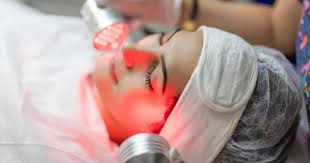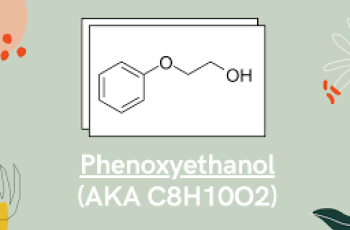
7 Benefits of Red Light Therapy
Red light therapy, also commonly called photobiomodulation or low-level light therapy (LLLT), is a therapeutic treatment that may help improve acne, fine lines, wrinkles, alopecia, and other skin and health conditions.1
Historically, red light was first used in the late 19th century for the treatment of smallpox scarring. However, the exact mechanisms of red light therapy were not well-understood until recently. A growing body of research shows promising evidence of red light’s clinical potential to help multiple conditions.234
How Does Red Light Therapy Work?
Red light therapy is a non-invasive treatment that uses low-level wavelengths of red or near-infrared (NIR) light on the body or large areas of the body. During treatment, photons, or single units of light, are absorbed by photosensitive molecules in a part of your skin cells.5 In red light treatments, this can lead to reduced inflammation, increased tissue repair, and skin healing.6
What Are Possible Benefits of Red Light Therapy?
Red light therapy is a promising therapeutic treatment with many possible benefits from improving the appearance of skin to wound healing. However, as the use and study of red light therapy is fairly recent, more research is needed on its potential clinical benefits.1
Reduces Muscle Pain and Inflammation
In a review of studies on red light therapy and its effect on muscle tissue, researchers found red light may be able to activate, heal, and regenerate damaged muscle tissue. The studies have shown red light can help enhance sports performance in athletes when it’s delivered to muscles either before exercise or after exercise.7
The review also showed red light therapy may help increase the level of muscle mass gained after training, as well as decrease inflammation and oxidative stress in muscle biopsies.
Within the study review, there are a number of limitations to note: studies were selected and analyzed from one scientific medical database, and the researchers conducting the review did not perform a comparative analysis. However, the findings are very promising and warrant further study.7
Rejuvenates Skin
Red light therapy may improve the appearance and texture of skin.
In a study involving 136 people, red light therapy visibly reduced fine lines, wrinkles, skin roughness, and increased collagen density. Researchers determined red light therapy provides safe treatment of skin tissue with high patient satisfaction rates. It’s important to note the trial was funded by a light treatment manufacturer so further study is needed.5
Another study found evidence supporting red light therapy’s safe and effective use on skin. Red light therapy triggers specific cell-signaling pathways that lead to heightened cell repair, especially in hypoxic (low levels of oxygen) or stressed skin cells. As the cells repair themselves, this could improve the overall appearance of your skin.4
Improves Acne
Studies show red light therapy may be able to treat acne.1 When applied to the skin, red light therapy reduces inflammation and increases turnover of keratinocytes, the most common type of skin cell that makes up the structure of our top layer of skin.8
There have also been promising studies on the treatment of mild-to-moderate acne with a combination of red light and blue light. However, more research is needed on the long-term effects of red light on acne and the use of red light for severe acne.1
May Reduce Body Fat In Some Areas
Laser-based, red light therapy devices are often used for body contouring treatments that aim to reduce body fat deposits in the arms, buttocks, thighs and abdomen.
However, clinical results are mixed, with some studies showing significant results and other studies showing no significant differences. Additionally, some studies had industry funding or flaws in methodology, so more evidence is needed to confirm this benefit.1
Improves Symptoms of Androgenic Alopecia
People with androgenic alopecia (a common form of hormone-related hair loss) may also experience significant benefits from red light therapy.91
A meta-analysis of 11 studies involving 667 people found red light therapy improved hair density and thickness with minimal side effects. Applying treatment for under one hour per week was most effective. Most of the examined studies used red light at wavelengths of 630-660 nanometers (nm), however some studies used dual-wavelength devices.1
Further study is needed, as nine out of the 11 randomized controlled trials were manufacturer-funded, and in seven out of the 11 trials, one or more of the study authors had a direct commercial interest in the device tested. The one study that stated no conflicts of interest was the only one to report the participants’ self-assessment data yielded no clinically significant difference in the perception of change.1
Assists in Wound Healing
Many studies on red light therapy have examined its effects on wound healing.1 One review of four studies involving 131 people with diabetic foot ulcers found red light therapy demonstrated positive therapeutic outcomes with no major side effects. This suggests red light therapy has the potential to effectively treat diabetic foot ulcers and other wounds.10
May Treat Traumatic Brain Injury and Other Brain Disorders
Red light therapy has been studied as a treatment for traumatic brain injury and other brain disorders. One study found participants with chronic, mild traumatic brain injury (mTBI) reported improved sleep and fewer post-traumatic stress disorder (PTSD) symptoms after scalp application of red and near-infrared light.11
Naeser MA, Zafonte R, Krengel MH, et al. Significant improvements in cognitive performance post-transcranial, red/near-infrared light-emitting diode treatments in chronic, mild traumatic brain injury: Open-protocol study. J Neurotrauma. 2014;31(11):1008-1017. doi:10.1089/neu.2013.3244
The participants also reported improved ability to perform social, interpersonal, and occupational functions.11
Another study showed red light therapy applied to the head can improve symptoms from traumatic events (stroke, traumatic brain injury, and global ischemia), degenerative diseases (dementia, Alzheimer’s, and Parkinson’s), and psychiatric disorders (depression, anxiety, and post-traumatic stress disorder). There is also a possibility this type of therapy can improve cognitive function in individuals not suffering from any of these conditions or diseases.12
What Are The Negative Effects of Red Light Therapy?
While modern red light therapy has many positive benefits and is virtually free of side effects when used properly, there are some potential risks. These include:1314
Mild or prolonged redness of the skin
Dry skin
Itchy skin
Skin crusting
Blistering or peeling
Hyperpigmentation
When red light therapy is used at the correct dosage (wavelength) for a particular treatment and is administered by a board-certified dermatologist, skin-related side effects are extremely rare.15
How to Get Red Light Therapy
Although red light therapy is considered a safe treatment, it is important to consult with your healthcare provider or a board-certified dermatologist before starting treatment.
The frequency and wavelength of red light therapy treatments vary depending on the area being treated.
Your healthcare provider or dermatologist will be able to advise on the treatment frequency and appropriate wavelength of light to help treat a specific condition.16
Red light therapy is also available via at-home devices that can be used for a small amount of time daily. However, not all devices have clinical studies to back up their claims. Also, these at-home devices are less powerful than an in-office treatment.17
If you are curious about using an at-home red light therapy device, make sure it is approved by the U.S. Food and Drug Administration (FDA), and speak with a medical professional before using it to determine if the device is right for you.17
A Quick Review
Red light therapy is an effective therapeutic treatment that has many potential benefits. Recent clinical data suggests red light therapy may help treat muscle pain, inflammation, and acne among other benefits.
While new research is promising and shows red light therapy is a safe and effective treatment, many studies have conflicts of interest or other limitations. More research will be needed to determine long-term impacts of red light therapy on health.


